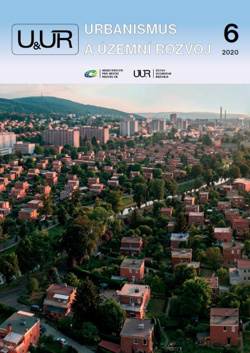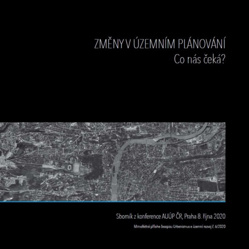

Options of metropolitan inter-municipal cooperation and its institutionalization: The example of the metropolitan area of Brno, by Josef Kunc, Petr Šašinka, Petr Tonev, Zdeněk Dvořák, Soňa Raszková, Markéta Novotná, Markéta Chaloupková and František Kubeš
Although many countries have long regarded metropolitan cooperation and the development of EU metropolitan areas as an important theme, the Czech Republic has yet to provide substantial support for the process of institutionalization of metropolitan cooperation at any of the key hierarchical levels (municipal, regional, national). In the creation of conditions for metropolitan cooperation, the Czech Republic appears passive, as if playing a waiting game. Many activities in this field can be considered consequences of external pressure or impulses from the EU. Nor has there been adequate professional inter-disciplinary debate providing valid conclusions for planning practice. This article aims to fi ll this gap in the Czech setting. Based on evaluation of the results of a large questionnaire survey (including analysis of statistical data and empirical experience from a model territory), its aim is to analyse and evaluate the potential of municipalities for metropolitan cooperation in the Brno metropolitan area. The model territory has been chosen with care: the attitudes of Czech metropolitan areas to metropolitan cooperation range from the passive role of simple beneficiary of European funds to the long-term conceptual creation of an individual dimension for metropolitan cooperation. As such, the city of Brno is a current leader in the development of cooperation and planning at metropolitan level in the Czech Republic. All three dimensions of metropolitan cooperation (factual, institutional and cultural) have been applied within this metropolitan area. During a 2017 survey, all 166 mayors of municipalities in the metropolitan area outside the city of Brno (comprising approximately 200,000 inhabitants over an area of 1,500 km²) were addressed through an electronically distributed questionnaire. The survey turned out to be reasonably representative: the return rate was 88% (146 municipalities, with the remaining twenty under average population). The results show that potential for metropolitan cooperation is relatively high: three quarters of municipalities addressed are willing to participate in some way. Only one third have refused to contribute financially or by a transfer of competences. As expected, there is very low willingness to merge with other municipalities to increase the efficiency of local administration, but this is not an indispensable condition for the starting and intensification of metropolitan cooperation. Also, the results have confirmed the supposition that willingness to participate depends significantly on the size of the municipality (smaller ones show greater willingness) and the distance to the centre of the metropolitan area (the city of Brno); greater willingness to cooperate is shown by municipalities located closer to the centre. In general, there is considerable potential for metropolitan cooperation of municipalities within the metropolitan area, although this is still very much conditioned and/or limited by financial considerations and the requirement to conserve basic administrational competences that are underpinned by strong historical memory.
The urban/municipal architect, by Petr Lešek
This article addresses the role of the urban architect and his/her importance for the care of the physical setting of settlements in the Czech Republic, focusing on middle-sized and small towns and villages. It describes the position of the urban/municipal architect and the scope of his/her work, which is potentially large because of its close relation to numerous responsibilities of self-administration and state administration. Also documented here is a long debate over the need for optimization of the organizational classification of the urban architect, which has resulted in acceptance of the advantages of the looseness oft his post. The history of urban architects in Czechoslovakia and the Czech Republic is outlined with reference to a number of organizations and publications that have played a part in it. Possible overlaps in (district and regional) urban architects’ responsibilities and options for mutual coordination are also mentioned. The main part of the article is an attempt to summarize possible benefits of the urban architect’s job for self-administration and to show examples of good practice as based on the work of urban architects in towns of under 50,000 and villages of under 1,000 population.
The scope of authority of the urban architect, by Jaroslav Sedlecký
This article is a brief reflection on the history, problems and circumstances of the work of chief (urban) architects and their departments before and after November 1989. It also addresses the question of whether today’s cities should be mainly beautiful or supportive of health.
Activities of Urbanismus, a working group, by Milan Košař
Under the name Working Group for Spatial Planning, Urban Planning and Landscape, our working group was established in the Czech Chamber of Architects in 2010. The name has evolved into Urbanismus Working Group. We celebrated the tenth anniversary of continuous operation last year.